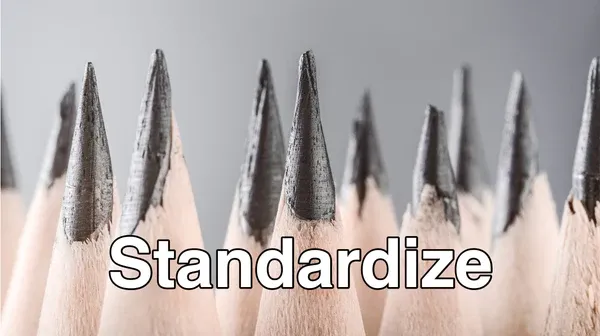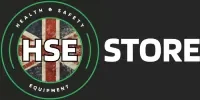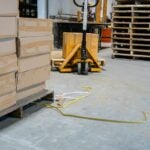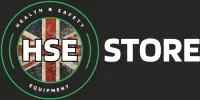In today’s competitive industrial and business environment, companies continuously seek ways to improve efficiency, reduce waste, and enhance overall performance. One of the most widely adopted methods for achieving these goals is Lean manufacturing. Within the Lean system, 5S is a core pillar. It is a workplace organisation method that enhances productivity and safety, ensuring businesses can meet high standards while staying competitive. In this article, we will explore what 5S is, how it functions, and how it integrates with the broader Lean philosophy.
What is Lean Manufacturing?
Before delving into 5S, it’s essential to understand the context in which it operates: Lean manufacturing. Lean is a systematic approach to streamlining production processes by eliminating waste, improving quality, and maximising value for the customer. Originating from the Toyota Production System, Lean thinking has spread across industries worldwide and is not limited to manufacturing; it’s applied in healthcare, IT, and service sectors too.
The core principle of Lean is waste reduction, categorised into seven types: overproduction, waiting, transportation, over-processing, inventory, motion, and defects. Lean aims to identify and remove these wastes to create a smooth and efficient workflow. Central to Lean are continuous improvement (Kaizen) and employee involvement, both of which are essential for maintaining a high-performance environment.
One of the foundational tools within Lean is 5S, which focuses on creating an organised, clean, and efficient workspace to support broader waste reduction goals.
5S Definition: A Method for Workplace Organisation
The 5S system is a methodology for organising and maintaining a clean, orderly workplace. It creates a foundation for Lean manufacturing and other continuous improvement processes by ensuring that workers can perform their tasks efficiently and without interruption. The name 5S refers to five Japanese words that each represent a step in this process: Sort (Seiri), Set in Order (Seiton), Shine (Seiso), Standardise (Seiketsu), and Sustain (Shitsuke).
Each ‘S’ plays a unique role in enhancing workplace performance, and together they create a system that ensures workplaces remain efficient and safe. Importantly, 5S is not just a one-time activity but an ongoing process of improvement. By instilling discipline and standards in the workplace, 5S supports the elimination of waste and helps build a culture of continuous improvement.
1. Sort (Seiri): Removing Unnecessary Items
The first step in the 5S process is Sort (Seiri), which involves systematically going through every tool, material, and item in the workplace and determining whether it is needed for daily operations. Anything that is unnecessary or not frequently used is removed from the immediate workspace. This process reduces clutter, making it easier for employees to find the tools and materials they need when they need them.
For example, in a factory, workers may accumulate broken tools or outdated parts over time. These items take up valuable space and can slow down productivity as workers sift through them to find what they need. By sorting and removing excess, companies can reduce the time spent searching for materials and increase efficiency.
In an office environment, sorting could mean clearing out old paperwork or unused office supplies. Once unnecessary items are removed, the workspace becomes clearer, allowing for smoother workflows. It’s a simple concept, but its impact on productivity and safety can be significant.

2. Set in Order (Seiton): Organising Tools and Materials
Once unnecessary items have been removed, the next step is Set in Order (Seiton). This involves arranging the remaining tools and materials in a way that promotes workflow efficiency. The key idea behind this step is “a place for everything, and everything in its place.” When items are arranged systematically, workers don’t waste time searching for what they need, reducing downtime and frustration.
In a manufacturing setting, this could mean creating designated spaces for specific tools or components. For example, a workstation may have a labelled storage area for screwdrivers, wrenches, and spare parts, making it easy for workers to grab what they need without unnecessary searching. Shadow boards, where tools are outlined for quick identification, are often used to implement this stage of 5S.
In offices, ‘Set in Order’ might involve organising files and documents in a clear and accessible manner. By creating a logical system, companies ensure that employees can quickly locate critical information, streamlining tasks and improving overall efficiency. Digital tools like project management systems can also be part of ‘Set in Order’ to ensure workflow is consistent.

3. Shine (Seiso): Cleaning and Maintaining the Work Area
The third step, Shine (Seiso), involves regularly cleaning the workplace to ensure it remains tidy and functional. But this step goes beyond simple cleaning—it also focuses on maintaining the equipment and tools in good working condition, thus preventing problems before they arise.
A clean workplace has many benefits. It can prevent accidents by keeping the floor free of debris, and it can reduce the wear and tear on machinery by ensuring regular maintenance. For example, in a factory setting, a regular cleaning routine might include wiping down machines, checking oil levels, and removing any built-up dust or grime that could cause equipment to malfunction.
In an office, ‘Shine’ could mean keeping desks clear of clutter and ensuring that computer equipment is clean and in good working order. Regularly maintaining electronic devices and cleaning common areas helps improve employee morale and productivity by creating a pleasant and functional workspace.
Shine is often referred to as a form of “preventive maintenance,” where a clean and well-maintained workplace helps reduce unexpected downtime and safety hazards, contributing to overall operational efficiency.

4. Standardise (Seiketsu): Establishing Best Practices
The fourth step, Standardise (Seiketsu), is about developing clear and consistent methods for maintaining the first three steps. Once a workplace is organised and clean, it’s essential to ensure that these improvements are sustained over time. Standardisation creates routines and practices that everyone in the workplace follows, which helps prevent the work area from falling back into disorganisation.
Standardisation might include developing cleaning schedules, creating checklists, and assigning specific responsibilities to workers for maintaining order in their areas. Visual controls such as signs, labels, and colour-coded systems are often used to make standards clear and easy to follow.
By standardising processes, companies ensure that the benefits of the 5S system are maintained long-term. It also promotes accountability, as every worker knows exactly what is expected of them in maintaining a clean and organised workplace.

5. Sustain (Shitsuke): Ensuring Ongoing Discipline
The final step in the 5S process is Sustain (Shitsuke), which involves making 5S a long-term habit within the organisation. This step is about ensuring that all employees are continuously trained and encouraged to follow the 5S principles. It involves building a culture where workplace organisation and cleanliness are part of the daily routine.
Sustainment is the most challenging part of 5S because it requires ongoing commitment from everyone in the organisation. Regular audits, continuous employee training, and management support are all essential to ensuring that 5S remains effective over time.
The key to success in this step is to make 5S a part of the company culture. When employees understand the benefits of 5S and take ownership of their roles in maintaining it, the workplace becomes more efficient, safe, and productive.

Purpose of 5S: Streamlining Processes and Reducing Waste
The primary purpose of 5S is to create a more efficient, safer, and more productive work environment. By focusing on organisation, cleanliness, and standardisation, 5S helps companies streamline their processes and reduce waste in the form of excess motion, downtime, and errors.
For example, an unorganised workspace can lead to workers spending excessive time searching for tools or materials, which reduces productivity. A clean and well-maintained workspace, on the other hand, reduces the risk of equipment breakdowns and safety incidents.
By implementing 5S, companies can reduce costs, improve productivity, and create a better working environment for their employees. Additionally, 5S serves as a foundation for other Lean methods, such as Just-in-Time (JIT) production and Total Productive Maintenance (TPM), further enhancing the efficiency of the organisation.
Employee Involvement: Encouraging Ownership
A key element of 5S is its emphasis on employee involvement. Workers are not merely expected to follow top-down directives but are encouraged to take ownership of their workspaces and the 5S process. This involvement fosters accountability and engagement, ensuring that the improvements made during the 5S process are sustained over time.
By engaging employees in the 5S process, companies can foster a culture of continuous improvement. When workers take pride in their clean, organised workspaces, they are more likely to identify inefficiencies and suggest improvements, contributing to the company’s overall success.
Visual Management: Enhancing Workplace Efficiency
Visual management is an integral part of 5S, as it helps make workplace standards clear and easy to follow. By using visual cues such as labels, colour-coded tools, and designated areas for materials, companies can create a workplace that communicates important information at a glance. This visual clarity reduces confusion, minimises errors, and helps employees work more efficiently.
For example, a factory might use floor markings to indicate safe walking areas, or an office might use labels to identify specific file locations. By making workplace standards visible, companies can enhance efficiency and reduce the time spent searching for information or materials.

Conclusion
In conclusion, 5S is a powerful and practical methodology within Lean manufacturing that focuses on creating an organised, clean, and efficient workplace. By following the five principles—Sort, Set in Order, Shine, Standardise, and Sustain—companies can reduce waste, improve safety, and enhance productivity. Furthermore, 5S fosters a culture of continuous improvement and employee engagement,








